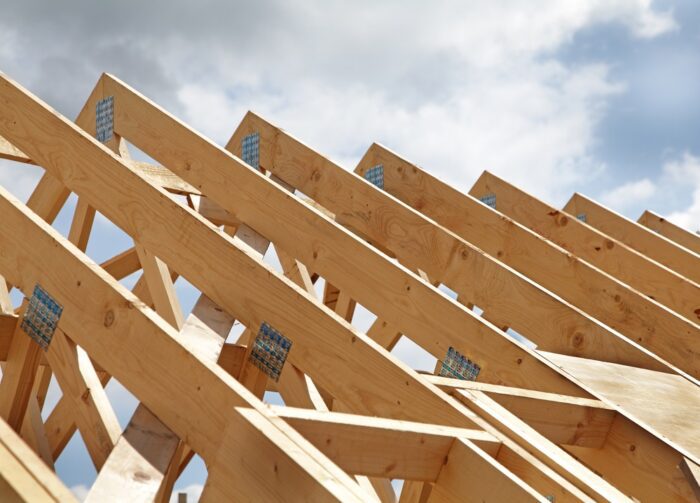Your roof keeps your home safe from exterior threats, including temperature fluctuations, extreme weather, and debris. Despite its crucial role in your shelter, you might not realize that this structure consists of several different layers.
If you notice an issue with your roof, you will want to understand the components of this residential feature. Then you can understand potential repairs necessary for your house. Your local home improvement expert can answer any questions about your roofing job. But you can also read on to learn more about the four major sections that make up your roof.

Roof Frame
The foundation of your roof starts with wooden decking known as a frame. This truss constitutes the skeleton shape of the roof that will support the other parts of the roof. Decking is made from plywood, and its size is usually dictated by local building codes.
The slope of the roof is determined by this frame. Low pitches in a roof may be more cost-effective, but a steeper slope might better resist weather damage. Snow, rain, and ice can better flow off of the roof and avoid pressure with a higher slope. Consult with a construction expert to learn which type of roof will best suit your home. To learn about how we can provide you with a slop roof, visit Low slope roof Annapolis.
Underlayment
The asphalt-based felt that covers the frame of the roof is known as underlayment. This material creates a barrier between any resin or other substances in the decking and the shingles. On the other hand, the underlayment also shields the frame from moisture that may get beneath the shingles of the roof.
This layer will also provide some protection in the event of a fire. It will help to preserve the wood in the frame from expansion and contraction that could warp the shape. Your roof may also benefit from an extra protective layer on top of the underlayment for ice and water protection.
Flashing
Flashing refers to a thin sheet of metal that a roofing expert will install to support intersecting pieces of the roof frame. They will put flashing around a chimney, skylights, vents, dormers, and valleys within the roof.
These materials offer protection from water and other exterior threats penetrating the roof where underlayment stops at roofing features. A home improvement professional can point out the areas of your roof that require flashing when you schedule an inspection.
Shingles
The top and visible part of the roof that you are likely most familiar with is the shingles. Shingles refer to tiles made from asphalt typically which offer style to your home as well as an initial stage of protection of your shelter.
The types of shingles that may suit your home may vary significantly. 3 Tab Shingles are an affordable roofing option, architectural shingles provide dimension and thicker texture, and premium or designer shingles offer a deluxe appearance and function for your roof. If you need repairs or replacements on your roof, talk to a contractor to understand the extent of the task.
